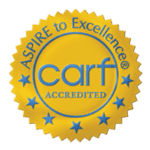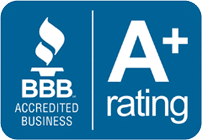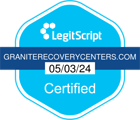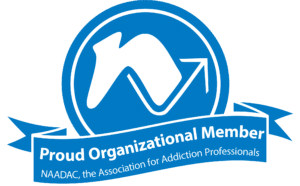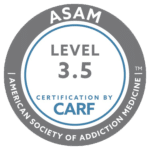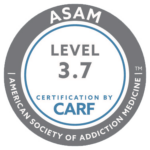Providence Addiction Treatment Resources
When you take any kind of drug or alcohol, the substance creates slight changes in the brain. While these changes are typically temporary and are aimed at relieving pain and briefly affecting the reward circuit in the brain, consistent use of drugs or alcohol can make your body depend on these changes in order to function correctly. If you believe that you’re suffering from a substance use disorder, it’s highly recommended that you obtain treatment as soon as possible to keep serious side effects at bay and to find a way to manage your cravings.
Understanding Drug and Alcohol Abuse in Providence
When looking specifically at drug and alcohol abuse in Rhode Island, over 100,000 individuals used illicit drugs in any given month. This same research suggests that over 235,000 people suffered from alcohol use disorder through binge drinking in a given month, some of whom lived in Providence. To put that it in perspective, they are currently 3rd in the nation for binge drinking and alcohol poisoning.
When you take a medication, recreational drug or alcoholic beverage, you will likely crave this substance in the future. The severity of your cravings depends on the strength of the substance that you take and the length you have been taking it.
For instance, taking the correct dosage of a prescription medication likely won’t come with any substantial cravings that would be difficult to resist. On the other hand, taking even a small dose of heroin or cocaine could cause you to experience significant cravings for the drug that would make it difficult for you to stop taking it. If you’re trying to identify if someone close to you has become addicted to a substance or is suffering from substance use disorder, some of the signs of addiction that you should look for include:
- Having more intense urges to take a drug or consume alcohol
- Continuing to use a drug even though it’s creating issues in your life
- Failing to stop taking a drug
- Not meeting work or school responsibilities
- Maintaining a consistent supply of the drug or alcohol in question
- Experiencing various withdrawal symptoms whenever you attempt to stop taking the substance
Once your body starts to become dependent on a drug or alcohol, you’ll start to experience withdrawal symptoms that could lead to you taking the substance again to get rid of the symptoms. While the withdrawal symptoms that you or a loved one could experience will differ substantially depending on the type of substance you take, there are some standard symptoms that you should be on the lookout for. For heroin withdrawal, the main symptoms that you could experience include:
- Agitation
- Nausea
- Sweating
- Shaking
- Muscle spasms
- Higher cravings for heroin
The withdrawal symptoms associated with alcohol can be even more severe and include:
- Vivid delusions and hallucinations
- High blood pressure and a racing heart
- Vomiting
- Insomnia
- Anxiety
- Sweating
In many cases, more severe addictions will come with intense withdrawal symptoms. When your body depends on drugs or alcohol to function properly, it’s difficult to predict exactly what the withdrawal symptoms will be when your body is no longer getting the substance that it craves. Even if you or a loved one is only experiencing minor withdrawal symptoms, it’s recommended that you seek medical care immediately. Doing so may also help you avoid relapsing.
Why You Should Obtain Treatment for Addiction to Drugs or Alcohol
It’s important to obtain treatment for addiction to drugs or alcohol because these substances can cause you to experience a wide range of adverse health conditions along with some serious problems with other aspects of your life. For instance, many people who become addicted to alcohol or drugs will spend a significant amount of their money on the substances that they’ve become addicted to, which can cause them to experience financial problems. The stress created by financial burdens oftentimes makes it more difficult to stop using the substance in question.
If you find yourself taking drugs or alcohol more often, you might also go through relationship problems with your friends, family members and significant other. People who are addicted to illicit substances typically experience some form of mood swings, which means that they can say things that they don’t really mean while craving the substance that they’re addicted to. Over time, these issues can cause rifts in relationships.
Some of the many other problems that can be brought about by substance use disorder include neglecting your appearance, having changes in behavior, having problems at work or school, and having physical health issues. Even minor substance use disorder can lead to you suffering from health issues like unexpected weight loss, fatigue, lack of motivation and decreased coordination. When an addiction becomes severe enough, the health of your liver and kidneys could worsen. For instance, alcohol abuse can lead to you suffering from liver disease, which is fatal in some situations. You can avoid some of the more severe problems by obtaining treatment early on.
Types of Treatments Available in Providence
There are three basic types of treatment that you should consider if you believe that you or a loved one is suffering from a substance use disorder. These treatments include detoxification, outpatient rehab and inpatient rehab. Detoxification is usually the first step toward being able to effectively control your addiction to drugs or alcohol. In many cases, detoxification will be available in both outpatient and inpatient programs and facilities.
The detoxification process is designed to make sure that you’re able to safely get the drugs or alcohol out of your system. The length of the detoxification process depends on how severe your addiction is and which substance you are addicted to. Some substances will take longer to get out of the body. During this process, you will experience withdrawal symptoms, which can range from minor to severe.
More severe withdrawal symptoms will likely be treated with small doses of medication to make sure that you don’t experience high amounts of pain while recovering. Whether you enter detox in an inpatient or outpatient facility, trained medical staff are typically on hand to make sure that any issues are dealt with immediately, which means that you will be safe and taken care of while going through the withdrawal phase of recovery.
Outpatient rehabilitation is another highly effective type of treatment that can provide you with a wide range of programs to help you cope with your addiction. These programs include everything from group therapy and individual counseling to family therapy and yoga or meditation. While outpatient rehab can be effective, there are some issues that you should keep in mind if you’re considering this option. For instance, patients who attend outpatient treatment programs are still able to go home at night while also maintaining their standard work and school schedules.
The majority of outpatient programs require the patient to attend treatment a few days per week for several hours each day. However, being able to go home when not in treatment can make it more difficult to avoid relapsing. If your home environment is one of the reasons that you started taking drugs, you might have issues with avoiding taking the drug that you’re currently addicted to, which is why you should consider entering an inpatient rehab program.
Inpatient rehabilitation is any type of program wherein patients stay in a residential facility 24/7 while undergoing treatment. From the moment you obtain detox to the moment you learn to properly manage your cravings, you will stay in a residential facility among other individuals who are also attempting to overcome their substance use disorder. All of the same treatments that are provided with outpatient rehab are available with inpatient rehab. While individual therapy and group counseling are typically the two pillars of inpatient rehab, some addiction treatments and activities that you will be able to take part in include:
- Yoga or meditation
- Cognitive behavioral therapy
- Various educational programs
While each of these treatments is highly beneficial for someone who’s attempting to overcome a substance use disorder, the most effective is likely inpatient rehab. When you’ve entered a residential facility, you’ll be in a drug-free environment, which will make it much easier to avoid relapsing. You’ll also be among individuals who understand what you’re going through and can help you learn how to manage your cravings. The availability of medical staff at all times makes inpatient rehab a safe option for anyone who wants to stop using drugs or alcohol.
Treatment Centers You Should Consider Entering
While there are a wide variety of treatment centers that you can enter in and around Providence, two of the top treatment facilities that you should consider include Green Mountain Treatment Center and New Freedom Academy, both of which offer extensive treatment options.
Green Mountain Treatment Center is situated in Effingham, New Hampshire, which is nearby the Lakes Region of the state and is nestled among the picturesque White Mountains. Along with fresh air and scenic mountain views, patients at this facility are provided with ample amounts of privacy. This treatment facility mainly follows a 12-step program toward recovery. The clinicians also offer a wide range of treatments and activities for patients that include:
- A full continuum of care that includes group therapy and individual counseling
- 12-step meetings and workshops
- An onsite gym that can help patients maintain their health during treatment
- Evidence-based clinical treatment
- Medical detox
- Meditation and yoga
New Freedom Academy is located in Canterbury, New Hampshire, and is much smaller than its counterpart at Green Mountain Treatment Center. This 20-bed facility offers seclusion and a wonderful atmosphere for recovery. Because of the low staff-to-client ratio, you will be able to receive personalized care that can aid your treatment. Some of the many treatments that are available at New Freedom Academy include:
- Individual therapy
- Cognitive behavioral therapy
- Treatment for mental disorders
- Medication-assisted treatments
This treatment facility offers mindfulness teachings such as meditation and yoga, which could assist you in learning how to lead a life without drugs.
Whether you or someone you know is suffering from substance use disorder, the first step toward obtaining treatment and learning to manage your cravings involves admitting that you have a problem. Once you make this admission, you’re ready to start your path toward a better life that’s free from drugs or alcohol.


